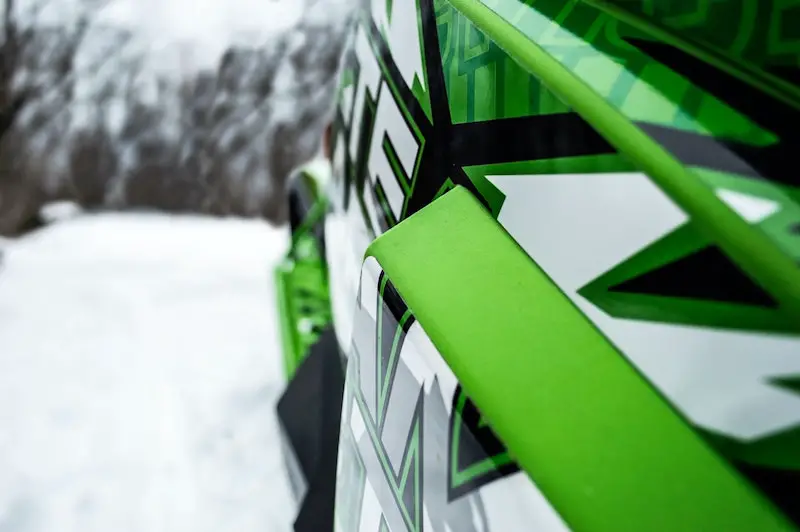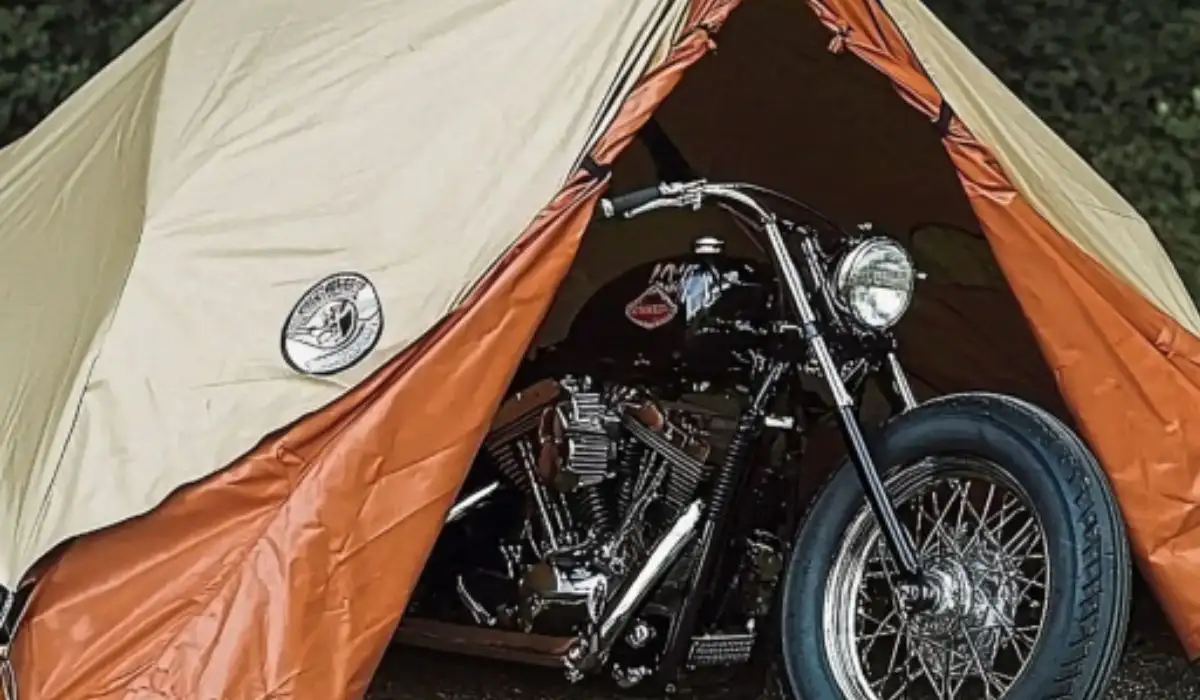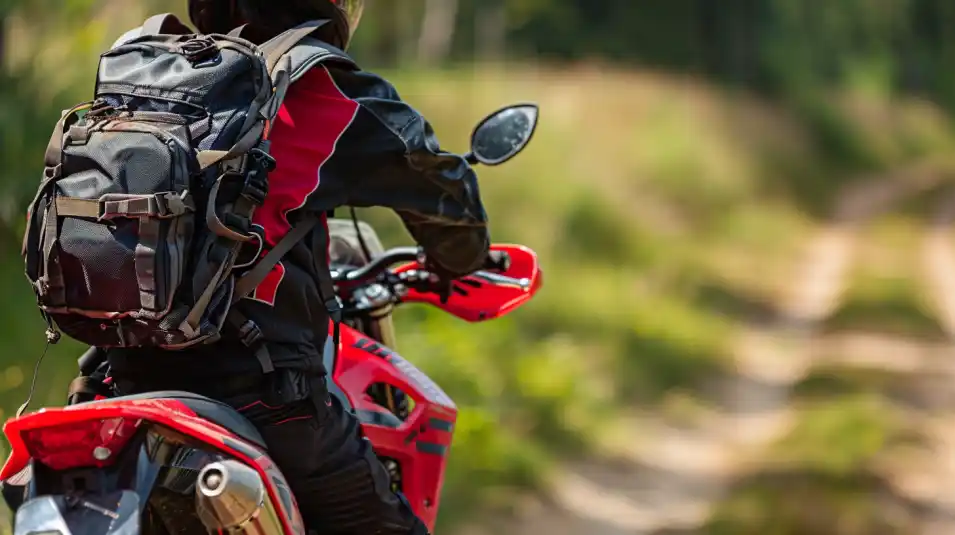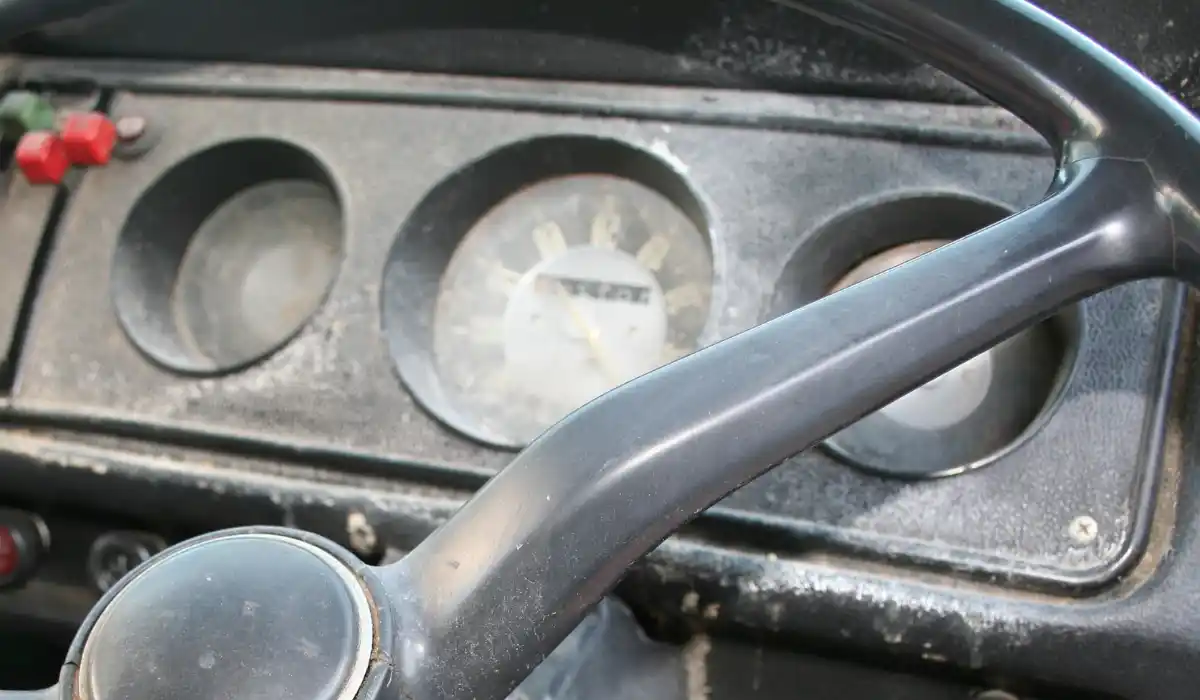
Maintaining a snowmobile is not only important for the safety of yourself and your machine but also for the smooth running of it.
If you want your snowmachine to be properly running whenever you need to use it, staying on top of maintenance is important.
Jump Ahead To:
Why Maintaining Your Snowmobile is Important
The number one reason that you should maintain your snowmobile is for the safety of yourself and of others that are with you during the winter time.
Another reason to maintain your sled is because it will help prevent any issues that might arise later on in the year.
You might not even know it but there are many parts inside of your snowmobile that can cause issues if you don’t maintain them properly. A little bit of maintenance can save you a lot of money and energy the next few months.
The last reason to maintain your sled is because there are many benefits to maintaining your sled, possibly even saving you money.
Maintaining your snowmobile will make sure everything works properly and does not break during the winter time. It will help you keep your sled in great condition so it can be used for many years.
If you are planning on driving your snowmobile in the winter time then you should get it maintained before you go out into the open. A person that knows how to maintain a snowmobile is very important especially if they can teach you what you need to know about driving safely in the wintertime.
In this post, we will be talking about how to maintain your snowmobile and some helpful snowmobile maintenance tips.
1. Change the Oil Regularly
Before you start your snowmobile up, or when you are about to drive it, check the oil for any leaks. It’s a good idea to replace the oil on your snowmobile regularly as well.
When you change the oil make sure it’s done on a regular basis and put new oil in. I would also recommend changing your snowmobile oil filter at every oil change.
Fresh oil helps lubricate all of the snowmobile components and keep everything running smoothly. It also helps to maintain a lower engine temperature so that the snowmobile engine is able to continue performing optimally.
2. Check the fuel filters
Make sure that you change your fuel filters regularly.
If you don’t, it could cause serious issues when you go out to drive your snowmobile. This is a very important step and should not be overlooked or forgotten about.
The fuel filter helps keep the fuel clean and more efficient, which will increase the amount of power you get out of your snowmobile.
This can be very important because if you don’t change your fuel filters regularly, it will not provide the same amount of power as before.
3. Replace the Clutch Springs
The clutch springs are very easy to replace. They are also cheap and you can get them from almost anywhere that sells snowmobile parts.
If you want a long lasting clutch, then it’s a good idea to replace your springs regularly.
The clutch springs on a snowmobile will wear out and need to be replaced. The OEM clutch springs are cheap but are made from materials that don’t last too long in the snow or salt.
If you want them to last longer then you will need to switch to a high-quality spring, which is more expensive but much better value in the long run. Just follow these steps when changing out your clutch springs for best results:
- When installing new clutch springs, use a hole punch so that they match with the holes in your flywheel or drums.
- If you have dual rear brakes, adjust one side at at time so there is no chance of compressing both brake shoes together accidentally when adjusting one side if they are not adjusted identically.
- If your snowmobile has dual front brakes, adjust them identically if possible. If they are not, then use a bubble level to help you align the side that will be on the bottom (dependant on how you adjust your snowmobile). If you end up with no adjustment for this, then it is unlikely that both sides will last long.
- Tune up after installing new clutch springs. Usually, the engine is most efficient when cold so by tuning it up you can get better gas mileage. The best way to tune it after is to run the engine through its entire RPM range and measure there output at all RPM’s with a beam tachometer or speedometer.
4. Change the Spark Plugs

The spark plugs will have a big effect on the power of your snowmobile, so I recommend changing them at least once a year (just like motorcycle spark plugs).
You should also check to make sure they are gapped properly.
Changing the spark plugs on a snowmobile is an important task and is not something you should put off. Take your time and make sure to follow all the instructions carefully in order to avoid possible damage or injury.
Things you will need for this project:
- Lots of room
- Spark plug socket wrench or wrench with a flat blade to remove the spark plugs from the crankshaft. Either one should not exceed 3/8 inches in diameter.
- New spark plugs for your snowmobile and heat gun and small propane tank (optional) (see above) to heat the heads up and make installation easier. Be careful not to melt other parts on your bike or burn yourself without flaring all windows and doors, but it is an option if you want to use it.
Procedure
- Detach the spark plug wires from the main relay box. Your snowmobile may have a different configuration, but whatever it is, disconnect the wires. This will make it easier to remove the plugs later. You can use a socket wrench or flat blade screwdriver to loosen the clamp that holds the wire in place. Don’t over tighten after you have removed them because this could break your spark plug wire.
- Remove spark plug wire from each cylinder head so they are no longer attached to your engine.
- After you have removed both spark plugs, use your wrench to remove the old plugs from your engine or cylinder head so you can put in new ones. You can use a 3/8 inch socket wrench for this purpose so you can get a good grip on the plugs.
- Insert the new spark plugs in your engine before replacing your old ones. Make sure they are going in straight and not sideways. If they are going in crooked, they could break or bend under pressure causing an engine problem that could become very costly to fix. Remember to only tighten each one by hand until you have them installed all the way in.
Always use an anti-seize compound on spark plug wires after you put them back on, but make sure to wipe off any excess from the wire or it will burn off when you start up again and be loose at this point.
4. Grease the Driveshaft and Jackshaft Bearings
These bearings are very easy to grease, but make sure you grease them before using your snowmobile. If you don’t, it will cause serious damage down the line. Forgetting to grease these components can cause them to wear out very fast.
Greasing the driveshaft and jackshaft bearings on your snowmobile is important because these bearings can come in contact with metal debris during operation and it can cause damage. But, before you do the maintenance yourself, you should refer to your snowmobile manual or ask your snowmobile dealer for tips on where and how to grease the driveshaft and jackshaft bearings.
If you’re not sure what their maintenance guide says, just find a video online of someone doing this important task before you do it yourself. You’ll also see if someone is wearing gloves or if their oilskins are up all the way around them — that’s a good indication that they’re doing it correctly (and safely). You’ll also want to make sure that they put the correct amount of oil in the jackshaft bearings (not too much) and under the driveshaft (not too little).
Cleaning your snowmobile’s engine is very important for preventing engine damage. You won’t know if you’re not cleaning it, so it’s imperative that you do this regularly.
5. Install New Sliders Every Year
Installing new sliders is a very important step. Make sure you use grease on the sliders to make sure that they are in place properly. If you don’t, then it will cause serious damage down the line.
Forgetting to replace the sliders can lead to ruined rails, which is an expensive snowmobile repair that could have been avoided.
While it’s possible to eyeball them, it’s a better idea to replace them at the beginning of the season to avoid any issues when you’re out riding. If the weather is cold, keep your snowmobile gloves on and check them before heading out.
6. Inspect the Snowmobile Suspension
Inspecting the snowmobile suspension on a regular basis is a great way to catch any problems before they become a serious issue. It’s a good idea to check the whole suspension every few weeks to make sure everything is in great working order. The more often you inspect your snowmobile, the more likely you are to catch any problems before they cause serious damage.
Regularly inspecting your snowmobile suspension, looking for any signs of wear or tear, is one way to keep it maintained. You want to make sure that there are no components that are worn down because snowmobiles need good suspension in order for them ride well on the snow. Taking care of your snowmobile’s suspension will help you get the most out of your ride.
There are several ways, other than checking the suspension, that you can maintain your snowmobile’s suspension. One thing you can do is change it up by riding off-trail and doing things like sitting down on jumps and mountain practices where you’re landing hard. These things will test the parts of your snowmobile that it may not otherwise be tested for.
When you’re going off-trail you want to make sure that the riser lifts as much as possible as it should. In other words you need to make sure that there is no play in the suspension fork, the springs are stiff and not allowing for any movement at all. The frame will slide under these circumstances and this can cause damage to your suspension. The helmet also needs to be accommodated because it can put a lot of force on the face area/helmet itself and cause damage to the suspension components too.
One way to do this is to tighten the nuts on the suspension components. This may be time consuming but it will pay off. You want to start with nuts and then move onto bolts as you tighten them. Another thing you can do is take your suspension components off and start over if needed.
If you’re going deep into the wilderness for a few days, one of the best things you can do is keep your suspension flexing and taking a beating. This means that your snowmobile will be able to take more force and won’t break as easily because it’s already broken in from riding off-trail.
7. Replace the Carbides
The carbides on a snowmobile can become worn out or damaged very easily, so it’s important to replace them as soon as possible. Carbides provide traction and make it easy to control your snowmobile during tough weather conditions. It’s a good idea to replace the carbides before you go out because they will help make it easier for you to handle your sled in tough weather conditions, which is important if you want to avoid serious accidents.
Replacing the carbides on a snowmobile is a task that is not easy to complete during the winter months. If you have a snowmobile and haven’t been doing your maintenance yet, there are some things that you need to know when replacing your carbides. This article will provide multiple guidelines for cleaning up the carbides on your snowmobile, which can help increase performance and reduce friction in them in a wintery climate.
It’s important to note that making sure these carbides were properly installed at the factory is another step in having good performance with these parts. The next step would be doing wear inspections before each ride or inspecting for wear after every ride. The number one cause of premature wear on carbides is improper maintenance.
It is also important to make sure that the carbide is the right size for the snowmachine. This means that you need to check your owner’s manual or ask your dealer about the size of the part you are looking at, and compare it to your snowmachine. This can be done by taking a small square of paper and folding it into quarters, then place it inside the ring for that size of carbide you are trying to install. If it fits, then you have the right size, or if it is too tight or too loose, then the next larger or smaller size of carbide needs to be purchased.
8. Tighten Up Bolts and Fasteners
Tightening up all of the bolts and fasteners is very important and should be done on a regular basis. If you don’t do this, then it will cause problems down the line and it could cause your snowmobile to break.
Grab a wrench and work your way around your snowmobile. Check all of the various bolts and fasteners that you have access to to make sure they aren’t loose or there is any play.
If you find a loose bolt or fastener, tighten it up with your wrench. The last thing you want is for one of these fasteners to come loose when you’re riding, which could lead to something catastrophic.
That’s why it’s a good idea to wear the best snowmobile helmet you can afford, just in case you run into any problems when you’re on the trail. Focusing on your own snowmobile safety is just as important as maintenance.
9. Test the Brake System
Before testing your brake system it’s important to check the brakes on a regular basis. Make sure that checking the brakes doesn’t cause issues down the line, which could be expensive to fix. This is especially important if you need your brakes at all times during the winter time.
Here’s some additional tips for maintaining your snowmobile brakes:
- Make sure your brakes are fully pressed every time before you start moving. This will ensure a smooth ride while standing or riding on level ground. If you find yourself constantly releasing pressure when starting up, this is an indication that something might be wrong with either the wheels or the brakes themselves.
- Keep an eye on the brake fluid reservoir every time you ride. This will enable you to see any leaks or spills before they become a problem. It is recommended that you change the fluid every 500 hours of operation, and this is a good basis for determining how much fluid would be needed for a given trip.
- Check the brakes and the caliper pistons frequently for overheating. When overheated, braking abilities will diminish and it can lead to overheating of your wheels and bearings as well as damage to the brake pads. Overheating can also cause dust to form inside your wheels which can cause premature wear on your seals and straining of the bearings as well as damage to your wheels and brakes.
9. Inspect the Wear Bars
The wear bars should be inspected before you go out to prevent any serious problems down the line. This is an easy thing to do, simply inspect the wear bars to make sure they are still in place.
As the wear bars approach the replacement level, it’s important to start replacing whatever is necessary. You don’t want take the chance and risk a catastrophic failure or accident because you weren’t staying on top of your preventative snowmobile maintenance.
10. Check the Lights
Never go out with the lights on your snowmobile not working properly. This could cause serious problems when you are driving down the road. It’s also dangerous for other people around you. It doesn’t help that the lights on your sled are expensive to buy, so it’s better to check them regularly before leaving.
Ensuring that the lights are working means you’ll be safer when you’re out on the trails. You’ll be able to see what’s going on ahead of you, even in dark and snowy conditions.
Having working lights also means that other people on the trails will be able to see you. This helps you to avoid getting into a crash or accident because another rider couldn’t see you on the trail.
Frequently Asked Questions About Snowmobile Maintenance
How often should you start a snowmobile?
As long as the battery is kept on a battery tender throughout the summer, there’s no need to start a snowmobile until you’re ready to ride it.
It’s a good idea to clean the carburetor and perform any other snowmobile maintenance before you start it up again for the season.
It’s not necessary to start your snowmobile throughout the warmer summer months when you’re not riding it.
Is SeaFoam good for snowmobiles?
Sea Foam is a great way to protect your sled by adding a Sea Foam motor treatment every time you fill up. Those of you that are dealing with snowmobile hard starts or rough idling will also want to add Sea Foam to the tank and run it for a short while.
When you’re storing your snowmobile after the winter, it doesn’t hurt to top up the tank with some Sea Foam as well.
How often should you grease your snowmobile?
It’s a good idea to grease your sled every 500 miles or so.
This keeps everything running smoothly prevents the need for unnecessary maintenance due to neglect.



